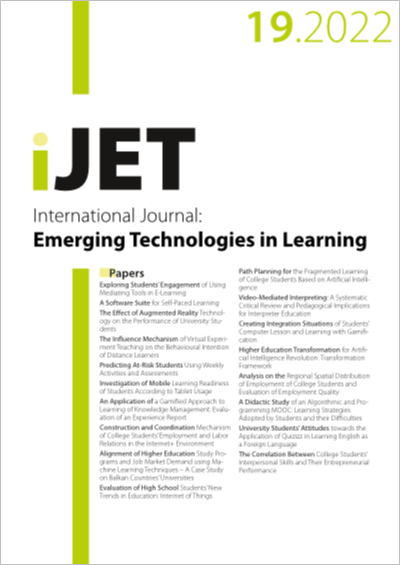Analysis on the Regional Spatial Distribution of Employment of College Students and Evaluation of Employment Quality
DOI:
https://doi.org/10.3991/ijet.v17i19.34519Keywords:
employment of college students, spatial distribution of employment, employment quality of college studentsAbstract
Analyzing the spatial distribution of the employment of college students and developing strategies to improve the quality of their employment are the key to helping college students get employed and retained in the region. However, there are few systematic and comprehensive research results on the employment of college students, and the existing employment quality indicator systems are not objective enough. To this end, this paper analyzes the regional spatial distribution of employment of college students and carries out extended study on employment quality evaluation. Firstly, an analysis model map of the regional spatial distribution of employment of college students was given. Based on the spatial lag model, the regional spatial distribution of employment of college students was preliminarily analyzed, with the influencing factors to the regional spatial distribution of employment of college students as the independent variables, and the regional spatial agglomeration level of employment of college students as the dependent variable. A spatial econometric model for the employment quality of college students was proposed, which introduced spatial effects, and realized the quantitative analysis on the contributions of the influencing factors to the regional spatial distribution of employment of colleges students. Finally, the analysis results were given, and the corresponding employment quality evaluation results were also provided.
Downloads
Published
How to Cite
Issue
Section
License
Copyright (c) 2022 Nan Zhang (Submitter); Ning Li, Lili Feng, Shu Zeng, Huinan Bo

This work is licensed under a Creative Commons Attribution 4.0 International License.


